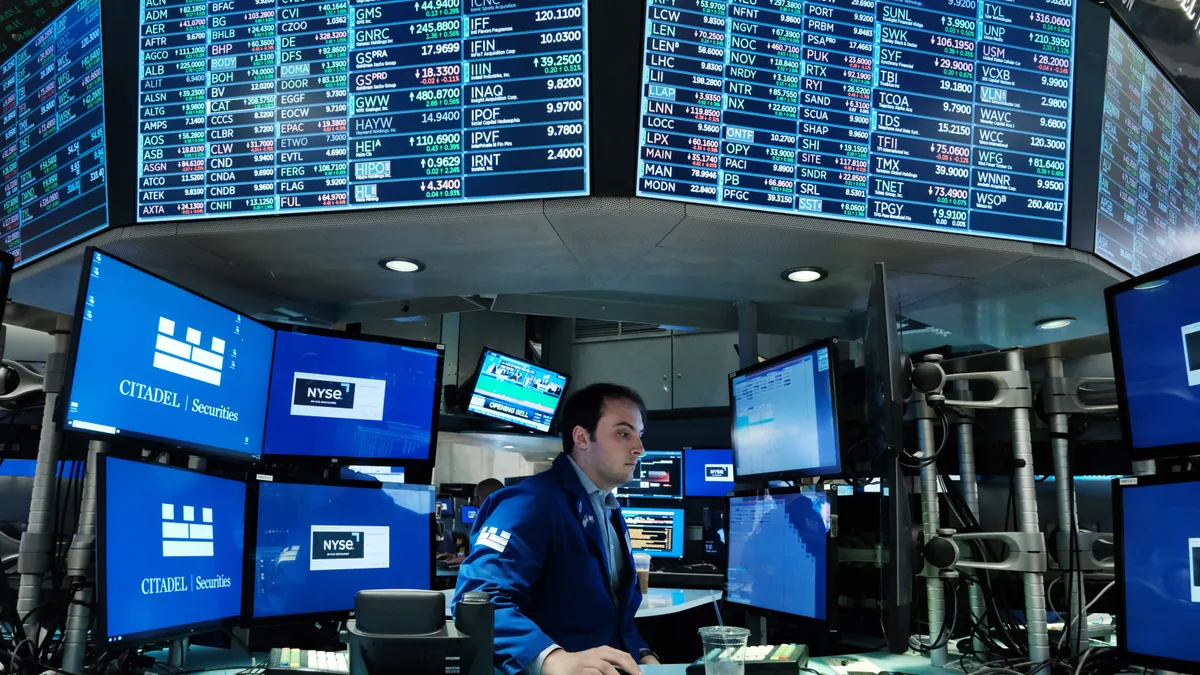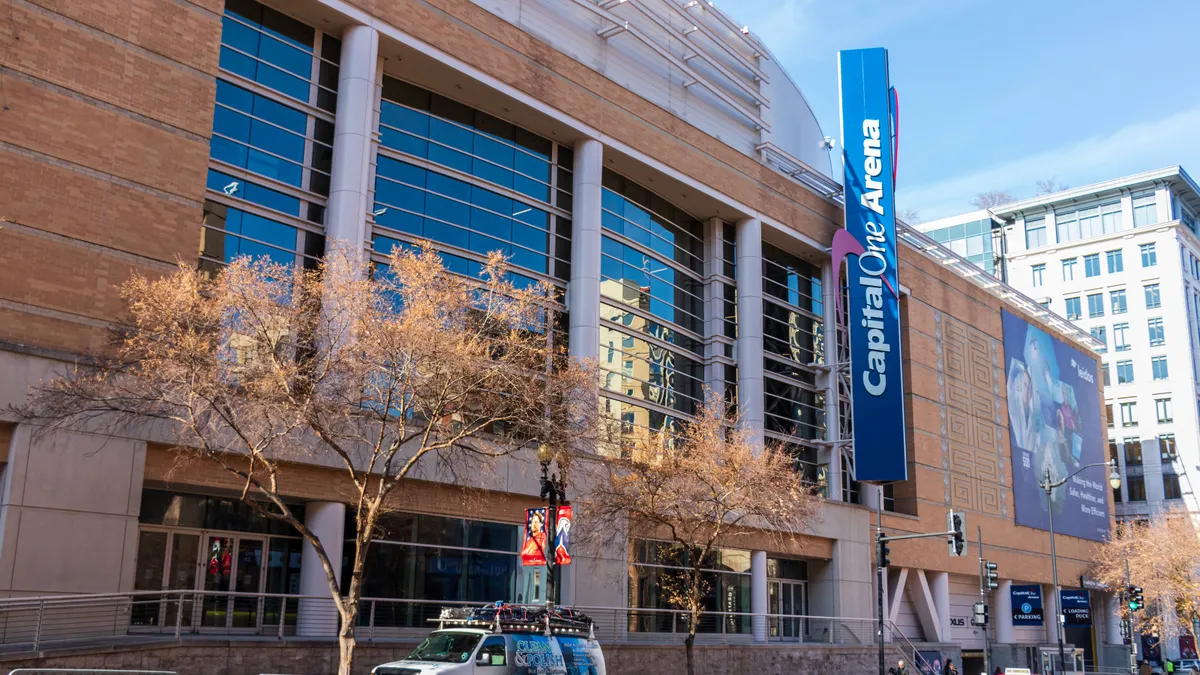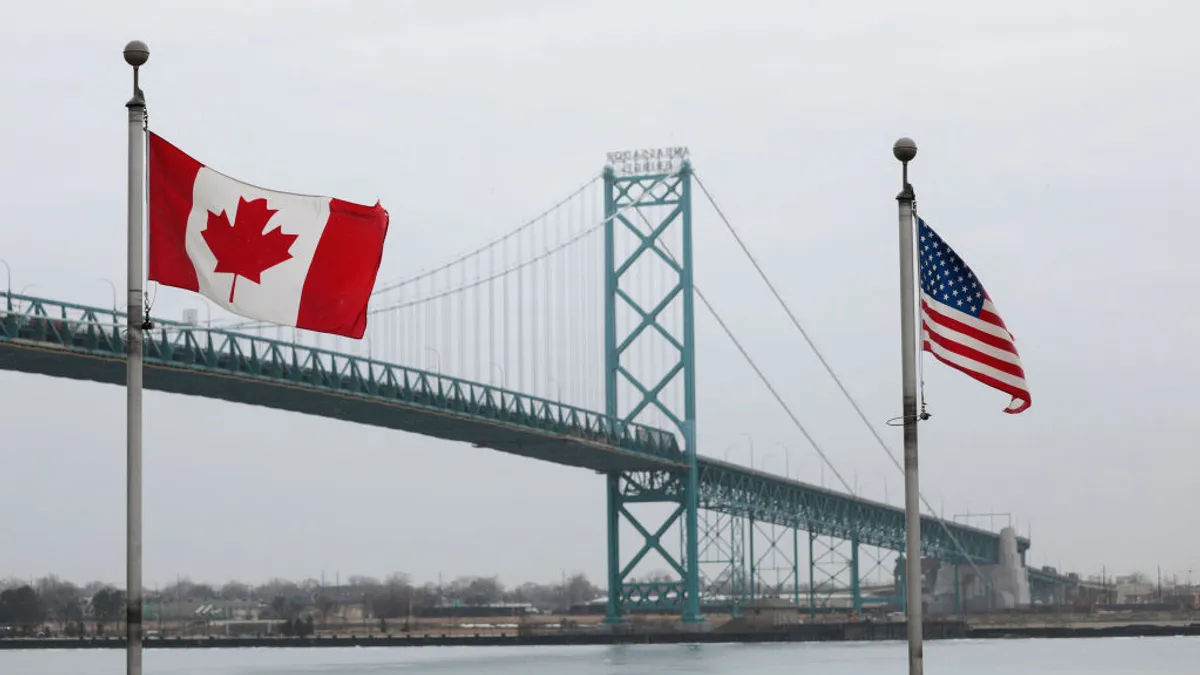This week, the prospect of a recession got real. Scary real.
Nearly six months into the stock market’s tumultuous ride, investors woke up Monday to see the claws of the bear now too late to duck: 40-year-high inflation for six months and the prospect of a quick spike in interest rates to tame it.
The S&P 500 fell into a bear market, defined as a 20% decline from its peak, and fell further Tuesday. Meanwhile, the 30-year fixed mortgage crossed the 6% threshold for the first time since 2008, sending mortgage applications in May to a 22-year low.
“Federal Reserve policymakers will continue to aggressively combat inflationary pressures,” said Anirban Basu, chief economist for the Associated Builders and Contractors in a statement, forecasting a recession later this year or next.
An ominous confirmation: The yield curve for government bonds — the difference between interest paid on 2-year and 10-year Treasuries — is getting closer to bending in the wrong direction, a widely recognized signal of an impending recession.
While the blood ran thick on Wall Street — 495 of the S&P's 500 underlying stocks ended lower Monday — nonresidential construction companies could be a safe haven against broader economic headwinds.
For instance, while the S&P 500 has lost 22% this year, the ISE Global Engineering & Construction Index, which tracks 56 large, multinational construction companies, has lost about half that — 12%.
There are several reasons these firms may show resilience in the face of a broader sell-off and sagging economy, including new project pipelines worth billions and plenty of future prospects to bid for in the $1.2 trillion Infrastructure Investment and Jobs Act.
And multi-year projects lead to “late cycle” profits in a downturn. Many key players, like AECOM and Jacobs Engineering, are pivoting to a less-risky business services model and away from the uncertainties and vagaries of physical construction.
To be sure, interest-rate sensitive sectors, such as income-producing properties, are likely to take hits. But on the nonresidential construction side, observers see reason for optimism.
Big backlogs
“In the headlines, we're hearing more and more talk about recession risk,” said Sean Eastman, senior equity research analyst at financial services firm KeyBanc Capital Markets. “Meanwhile, most of the engineering and construction companies I cover just reported record or near record backlog levels in the first quarter.”
The ABC’s Construction Backlog Indicator, which measures jobs contractors have won, but not started, hit nine months on Wednesday, the highest since September 2019 — before the pandemic and when commercial construction was near its peak.
“It is simply remarkable that contractors continue to add to backlog amidst global strife, rising materials prices and ubiquitous labor force challenges,” said Basu in a statement. “Backlog is up in every segment over the past year.”
Investors seek a safe haven
The firehose of infrastructure funding, which has just started to pump and will continue for five years, gives observers plenty of evidence that nonresidential construction firms could weather a recession.
“I'm still bullish on construction … Public construction spending, at least, is likely to hold up even if the economy slows dramatically,” Ken Simonson, chief economist at the Associated General Contractors of America, told Construction Dive.
Their stocks could be safer bets for investors trying to shed risk, especially construction and engineering firms with more public infrastructure business.
“The growth prospects are a little bit more locked in and are not as uncertain in a market that's looking for a safe haven,” said Andrew Wittmann, senior analyst at financial services firm Robert W. Baird.
While many would like to forget the Great Recession that hammered the housing sector, profits in commercial construction were buffered longer because of the long lead times and government contracts.
“Housing crashed around 2006, but nonresidential construction on the private side kept going right up until the fall of 2008,” AGC’s Simonson said. “Even then, public construction kept going for a year after that, because those were pretty long runway projects.”
The big players also cover a lot of ground. Take Granite Construction, based in California. While the company is a roadbuilder at its core, the firm has posted big gains in its aggregate business — selling things like asphalt and other materials needed for construction — during the pandemic.
Shying away from risk
Others say these companies’ strengths lie beyond just a business cycle strength, at least this time around. The reason why is because companies like AECOM, Jacobs and Fluor are diversifying into more stable, higher-margin work like government services. That helps compensate for cost overruns on fixed-price contracts that erase profits.
“They’re a little more resilient than they were a few years ago,” said Krzysztof Smalec, an equity analyst on the industrials team at investment research firm Morningstar.
Nevertheless, some pundits see plenty of risk in these stocks. CNBC’s Jim Cramer, for example, recently panned Fluor in his “Lightning Round” stock-picking segment. “Under no circumstance do you want to buy Fluor,” Cramer said. “That business is way too hard.”
But KeyBanc’s Eastman argues that view disregards the secular changes these companies have made in recent years. He says the upside of their new approaches has yet to play out.
“These businesses have become considerably more predictable, and I feel like we're able to forecast out a lot further than we could have previously,” Eastman said. “That adds another layer of contrast. We haven’t even really seen the tailwind from the Infrastructure Investment and Jobs Act hit these models yet.”
Apartments, hotels, retail and office beware
That said, the outlook certainly isn’t rosy for all sectors of construction. For one, rising interest rates will almost surely have brutal impacts, especially for properties that collect rent.
“I'm stunned to see how much the 30-year fixed mortgage rate has gone up just today so far,” said Simonson on Monday, when rates jumped to 6.13%, a nearly 30-basis point leap in a single day, and double the rate six months ago. “That’s clearly a danger sign for home building and for any income-producing property type. Apartment construction, hotel, retail and office, to the extent that those were coming back, and it's hard to tell if they were, are all certainly vulnerable.”
Basu added that supply chain and inflation worries will continue to plague contractors, no matter what sector they work in.
“For contractors, the challenge will continue to be the cost of delivering construction services,” said Basu. “The risk of severe increases in costs and substantial delays in delivery remains elevated given the volatility in input prices, the propensity of the labor force to shift jobs in large numbers and equipment shortages and delays.”
But for shares of large, public-facing nonresidential contractors, the bear market may be just the makeover they need to transform into Wall Street darlings at last.






















